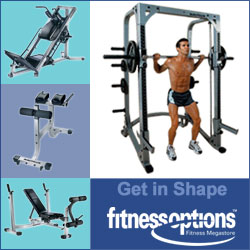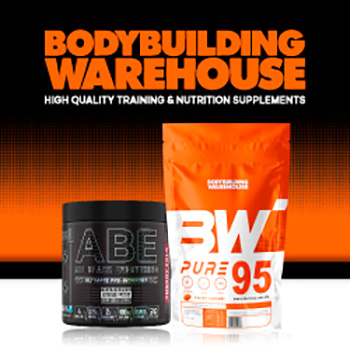
After you’ve gotten the hang of bodyweight exercises, you can start incorporating light dumbbells into your routine to build strength faster. Always start with lighter weights than you think you’ll need. Maintaining good form is more important than how heavy the weights are. These four basic dumbbell exercises will give beginners a full body workout.
Goblet Squats: A Superior Squat
Goblet squats are a great way to add some upper body work to your squats and help you maintain good form. To do a goblet squat, hold a dumbbell vertically against your chest, with both hands cupping the top end. Stand with your feet a little wider than shoulder width apart, with your toes turned out slightly. Keep your chest lifted as you lower into a squat. Keep the dumbbell close to your body. Push through your heels to stand back up, and keep your core tight throughout the movement.
The goblet squat is a great way to learn how to squat correctly. The position of the weight naturally helps you to keep your torso more upright, which reduces the strain on your lower back. Start with a light dumbbell (5-10 pounds) and focus on getting a good range of motion and control before you start to increase the weight. You should aim to do 2-3 sets of 10-12 reps.
Easy Back Strength with Dumbbell Rows
dumbbell exercises for beginners are a great way to build essential pulling strength that balances out all the pushing movements you do in your everyday life. To do a dumbbell row, put your left knee and hand on a bench with your right foot on the ground. This will create a stable base with your back parallel to the ground. Hold a dumbbell in your right hand with your arm fully extended. Pull the dumbbell toward your hip. Drive your elbow up and back, keeping your elbow close to your body. Lower the dumbbell with control and then repeat the movement.
Try to concentrate on beginning the movement with your back muscles rather than your arm. Imagine that you’re starting to pull by moving your shoulder blade toward your spine. Maintain a neutral neck by looking at the floor a few feet in front of you, not up or down.
Start with a weight that you can lift for 10-12 reps without breaking form. Do all the reps on one side before switching to the other arm. If you don’t have a bench, you can do this exercise in a split stance with one hand resting on a sturdy chair or counter.
- Make sure your spine stays neutral throughout the exercise
- Don’t twist your torso while you’re pulling
- Lower the weight slowly instead of dropping it
- Focus on your mind muscle connection by intentionally using your back muscles
Chest Press: Building a Strong Upper Body
The chest press with dumbbell exercises for beginners is a great way to increase your pushing strength in your chest, shoulders, and triceps. You’ll start by lying on a bench or the floor with a dumbbell in each hand at the sides of your chest. Then, push the weights up until your arms are fully extended, but don’t lock them. Lower the weights back down to the starting position, controlling the movement. If you’re using a bench, make sure to keep your head, upper back, lower back, and both feet on the floor for stability. If you’re on the floor, your range of motion will be naturally limited. This is easier on your joints and a good choice for beginners.
Lateral Raises: Carve Out Those Shoulders
Lateral raises are a great way to target and tone up those deltoids that give your shoulders their shape. Start by standing with your feet hip width apart and light dumbbells in your hands, palms facing inwards. Keep a small bend in your elbows as you lift the weights out to the sides until they’re at shoulder height, then slowly bring them back down. Make sure you’re standing up straight and keeping your core tight the whole time.
You may be surprised to find that you don’t need to lift heavy weights for this exercise to work. Most beginners should start with 2-5 pounds to ensure they are using the correct form. Make sure you are lifting with your shoulder muscles and not using momentum. Try to avoid shrugging your shoulders toward your ears during the exercise. Start with 2 sets of 10-12 repetitions, and gradually work up to 15 repetitions before you increase the weight.
Your First Strength Training Workout Plan
It’s important for beginners to have a structured workout plan to ensure balanced muscle development and adequate recovery time. Don’t make your first program too complicated. Consistency with a simple plan is more effective than sporadic attempts at complex routines. The key is finding a schedule that fits into your life and that you can stick with for the long term.
Keep in mind that your muscles require time to recuperate between workout sessions. If you’re new to working out, you’ll probably feel some muscle discomfort (known as Delayed Onset Muscle Soreness or DOMS) 24-48 hours after your workout. This is to be expected and shows that your body is adapting. However, it shouldn’t be so intense that it hinders normal movement or discourages you from keeping up with your routine.
Two Day Full Body Workout for Absolute Beginners
If you’re just starting out with strength training, this easy two day full body workout is the perfect place to begin. Do these workouts with at least 48 hours in between (for example, Monday and Thursday). Start each workout with 5-10 minutes of light cardio to warm up, then do these exercises in this order, using weights that let you keep good form for all the reps.
For the first two weeks, you should only do 1-2 sets of each exercise. After that, you can increase to 3 sets as you get better at recovering. It’s important to get the movement patterns down before you start adding more weight. Take a 60-90 second break between sets. You can rest even longer if you need it to keep your reps good.
| Workout | Sets | Reps | Rest |
| Goblet Squats | 2-3 | 8-12 | 60-90 sec |
| Push-ups (or Modified Push-ups) | 2-3 | 8-12 | 60-90 sec |
| Dumbbell Rows | 2-3 | 8-12 per side | 60-90 sec |
| Glute Bridges | 2-3 | 12-15 | 60-90 sec |
| Plank | 2-3 | 20-30 sec hold | 60 sec |
3-Day Split for Quicker Results
After you’ve consistently completed the 2-day routine for 4-6 weeks and feel comfortable with the workouts, you can move on to this 3-day split for more targeted growth. This method allows you to include more workouts per muscle group while still providing enough recovery time. Ideally, schedule these workouts on Monday, Wednesday, and Friday, or Tuesday, Thursday, and Saturday. This allows rest days between training sessions.
On each day of training, do 2-3 sets of each exercise, with 8-12 reps in each set, and rest for 60-90 seconds between sets. The weights you choose should be heavy enough to make the last 2-3 reps challenging, but not so heavy that they compromise your form. If you’re able to complete all reps without feeling tired, increase the weight a bit for your next workout.
What’s the Best Rep and Set Range for Beginners?
If you’re just starting out, aim for 8-12 reps per set for most exercises. This rep range is a happy medium between building strength and learning proper form. It also minimizes the risk of injury. Start with just 1-2 sets per exercise for the first few weeks, then work your way up to 3 sets as your body gets better at recovering. For bodyweight exercises that are tough for you (like push-ups), don’t worry about hitting a certain number of reps. It’s better to do fewer reps with good form than to do more reps with bad form.
When it comes to core exercises like planks, concentrate on time under tension instead of repetitions. Start with holds of 20-30 seconds and slowly increase to 45-60 seconds as your strength improves. The aim for beginners isn’t to exhaust yourself to the maximum. Focus on consistently doing quality work that develops correct movement patterns while also gradually building strength.
Resting Between Sets and Exercises
Resting between sets and exercises is a crucial part of strength training that often gets overlooked. If you’re a beginner, you should be resting for 60-90 seconds between sets of the same exercise and 1-2 minutes when switching to a different exercise. This rest time allows your muscles to refill their energy stores. It also helps you keep good form during your next set.
It’s a common pitfall for newbies to race from one exercise to the next in a misguided attempt to “feel the burn” or save time. But short changing your rest usually results in sloppy form and a dip in performance in later sets. Use your phone’s timer to keep your rest periods consistent. Fight the temptation to stretch out your rests beyond the suggested time unless you’re feeling dizzy or super tired.
Interested in fitness equipment that actually works? Look no further! Our personalized fitness equipment is designed to help you reach your full potential and achieve the results you desire. With expert guidance and personalized support. Click Here to learn more and start your journey to a fitter, healthier you.






